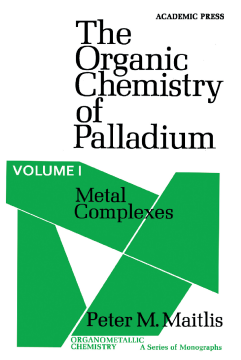
Additional Information
Book Details
Abstract
The Organic Chemistry of Palladium, Volume 1: Metal Complexes deals with the number of organic reactions that can be catalyzed by palladium, particularly as regards the structures bonding, and reactions of the metal complexes. The book discusses monodentate ligands which are either neutral (carbonyls, isonitriles, carbenes) or anionic (methyl, phenyl, ethynyl, hydride). The text also examines the complexes formed by 1,3-. 1,4-, and 1,5-diolefins where four carbon atoms are bound to the metal. Palladium (II) can undergo a reaction with the 1,3-dienes and results in a ?-allylic complexes where only three carbon atoms are coordinated to the metal. (The bonding situation in complexes 1,4- and 1,5-dienes, where no great interaction between the olefins are similar to that in monoolefin complexes, is straightforward), Olefins can also react with palladium chloride in protic solvents to produce ketones (or aldehydes) or organic coupling products. Some experiments conducted by Huttel et al shows that some palladium was precipitated from the reactions giving lower yields, resulting in various aldehydes and ketones as by products. The book also discusses cyclopentadienyl and benzene complexes. The text can prove beneficial for researchers, investigators and scientists whose works involve organic chemistry, analytical chemistry, physical chemistry and inorganic chemistry.
